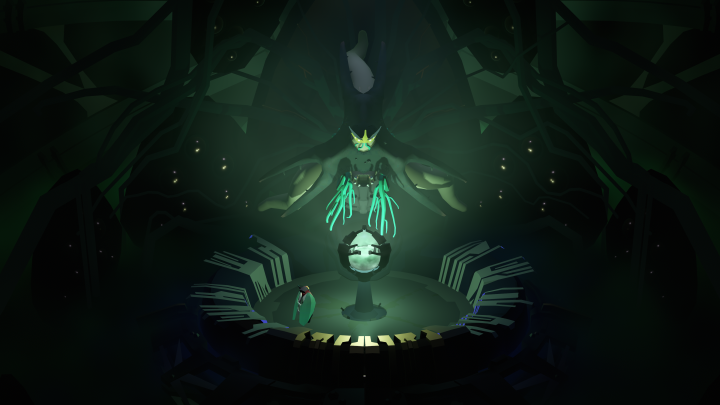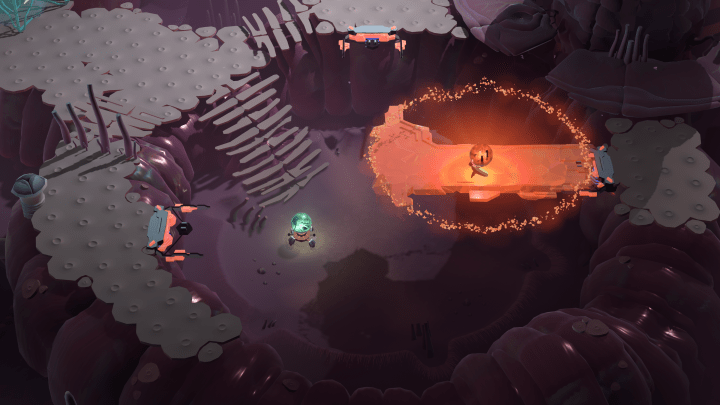
There was no shortage of exciting games at this year’s Summer Game Fest. Geoff Keighley’s annual live stream featured excellent trailers from games like Final Fantasy VII Rebirth and Sonic Superstars. As part of that event, Keighley also hosted a two-day in-person event where press and content creators got to go hands-on with some of the games featured during the showcase and this year’s Day of the Devs stream. Digital Trends was on hand for the event, and we demoed a wealth of high-profile games, from Alan Wake 2 to Mortal Kombat 1.
The game that’s stuck out most so far, though, perhaps isn’t the one you’re expecting: Cocoon.
Published by Annapurna Interactive, the mysterious indie is an atmospheric adventure that combines insects and machinery. It’s a little hard to get a sense of what it is from a trailer, but it left an incredibly strong impression on me after 20 minutes of playing time — so much so that I was genuinely bummed when I had to put my controller down. I’m already dying to return to Cocoon‘s unexplainable world and unravel more of its quiet mysteries.
A bug’s life
In Cocoon, players take the role of a winged insect lost in a strange world that’s somehow both mechanical and natural. It’s an odd fusion, with robotic, insect-like structures populating its eye-catching 3D world. I wouldn’t fully understand what I was seeing until I talked to some members of the development team, who cited Alien as a huge inspiration, after playing it. That certainly shows, as the world almost reminds me of a more colorful (and less phallic) version of H.R. Giger’s artwork.

When I picked up a controller to play the demo, I knew absolutely nothing about Cocoon or how it played. I’d seen a reveal trailer for it previously, but that didn’t explain too much about its gameplay. I’d quickly find myself in a totally abstract series of traversal puzzles, where I’d buzz around and interact with different objects and symbols to open up the world piece by piece.
What’s remarkable is that the demo I played didn’t offer any sort of tutorial. There was no HUD or markers showing me where to go, nor did I ever get a button prompt telling me I could interact with an object. And yet, I always knew exactly what to do. When I found a glowing symbol on the ground, I instinctively walked over and held down a button until it filled up with light. Later, I’d carry an orb around through a gauntlet of puzzles whose solutions came to me without a second thought. Something about its visual language feels incredibly natural — almost universal — in a way that brings me back to last year’s Tunic.
Also impressive is how much developer Geometric Interactive is able to pull from what’s essentially a one-button control scheme. I’d only control my dung beetle-like character with the control stick and a single button throughout my playtime, but I’d interact with the world in so many ways that it hardly ever felt simple or boring. For instance, the orb-carrying mechanic I mentioned would take a sudden turn later on when I gained a power-up that would allow me to illuminate hidden bridges while holding it. It was entirely new way of interacting with the world without shaking up a minimalistic control scheme that anyone can understand.

That strength would be on full display in a surprising boss fight, which had me dodging around a giant bug’s crystalline attacks, running over a burrowing insect to pop it out of the ground, and throwing it like a bomb. It’s a streamlined encounter in terms of controls, but that doesn’t make it feel any less thrilling than a boss fight in a full-on action game.
It’s hard to fully describe what makes Cocoon so alluring in words. After 20 minutes, I was fully mystified by its intricately designed world and incredibly natural puzzle solving that made it easier to lose myself in the adventure’s surreal atmosphere. Everyone I’ve talked to who played the demo at Summer Game Fest had a similar experience, leading to a lot of conversations where we struggled to put our fingers on what makes Cocoon feel as truly special as it is.
Trust me: You’ll get it when you play it.



